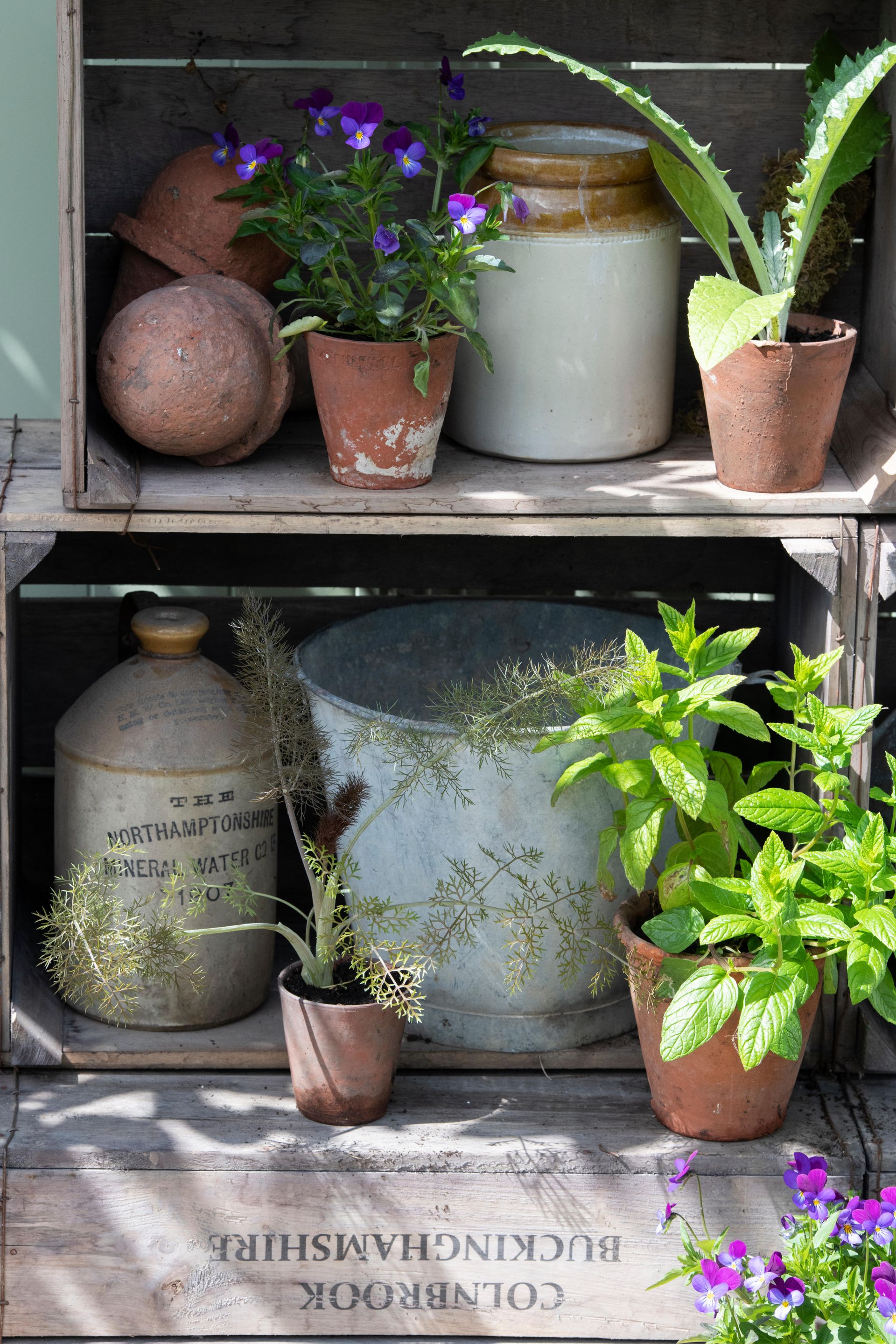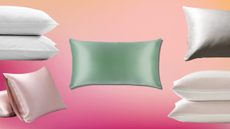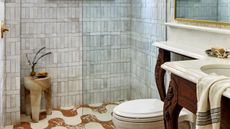What is the best potting mix for container gardening? Here's why you should never use garden soil for your pots
With so many different soils to choose from, picking the right one for container gardening can be a challenge...


Container gardening is a super accessible way to start your journey to becoming more green-thumbed, but growing plants in pots just isn't the same as growing them in your garden soil. While generally easier for the most part, it does involve using a special potting mix to ensure your plants can thrive, and choosing the right one is important.
One of the biggest challenges when it comes to container gardening is that the soil can't regenerate or extract any nutrients from the earth like a regular flower bed can, for example. When potted, your flowers, shrubs, or vegetables are growing in a much more limited space too, which means the soil has to provide all the nutrients your plants need to survive. It's no surprise then that choosing the best potting mix is crucial to your plants' success.
That said, if you've ever stepped foot in a garden center, you'll know that buying soil is more than a case of just picking the first bag your see off of the shelf. There's a myriad of different types, from compost and topsoil to perlite and vermiculite mixes. If you're new to the gardening game, to say it's overwhelming would be an understatement. To help clear things up, we've asked some expert gardeners for their advice on the best potting mix for container gardening. Follow their tips, and you can get started on a pretty potted oasis in your backyard in no time at all.
What is the best potting mix for container gardening?

Regular garden soil won't produce the best results when it comes to your backyard pots - a potting mix is always best. The problem is, there are a whole host of potting mixes to choose from, all with different mineral particles.
First things first, let's clear up some jargon. While the terms 'potting soil' and 'potting mix' are used interchangeably by some, there's a vital difference. Potting mixes are actually soilless and contain a special combination of ingredients to ensure your plants have enough air, moisture, and nutrients to thrive. It's this type of mixture that you want to use for potting up your plants in containers.
With that out of the way, we then need to distinguish the different types of potting mixtures. From peat moss to aid moisture retention to perlite to improve water drainage, the minerals within different mixes all play different functions.
'As someone who has been in container gardening for years, I've tried several different potting mixes and have found that a mix of peat moss, vermiculite, and perlite works best for me,' explains Richa Kedia, gardening expert and founder of Nursery Lady.
'Peat moss is a great ingredient for retaining moisture in the soil, which is essential for container gardening since pots tend to dry out faster than traditional garden beds, while vermiculite is a mineral that helps with aeration and drainage, which is important for preventing waterlogged soil that can harm plant roots.'
'Perlite,' she adds, 'is another mineral that helps with drainage and also adds some weight to the mix, which can help stabilize taller plants.' Of course, as Richa points out, every gardener's situation is different, and the right potting mix for you will depend on your climate as well as what you're planting.
For the best potting mix, keep an eye out for one that contains these three different materials, or buy them separately and mix them in yourself.
 $11.99
$11.99
In some cases, you can get by with a regular multipurpose compost for your container gardening. As Reese L Robins, gardening expert at Just Pure Gardening, explains: 'Multipurpose compost contains a balanced mix of nutrients and organic matter suitable for most plants.'
For the healthiest plants possible, however, you'll probably want to add some extra nutrients. 'Adding a slow-release fertilizer to the compost can further enhance its nutrient content and ensure healthy plant growth in containers,' says Reeese.
When it comes to vegetable container gardening, it's especially important to have a potting mix that allows the water to drain well, so you might want a higher content of perlite to keep the soil loose and improve aeration.
 $11.13
$11.13
Why is garden soil not a good choice for container-grown plants?

Now I know what you're thinking - dirt is dirt, whether mixed with minerals or not, so why not scoop some soil from your flower beds and add it to your containers?
'Garden soil is designed for use in the ground, where it has access to natural drainage and nutrient cycles,' says Richa. 'When used in containers, it tends to be heavy and dense. This can lead to poor drainage and waterlogged soil, which can cause root rot and other fungal diseases.' There's also the likelihood that your garden soil may contain weed seeds, pests, and even diseases that can spread to your potted plants.
According to Richa, another issue with garden soil is that it probably won't provide the nutrients your plants need to thrive. 'Garden soil is often depleted of nutrients over time and may not contain the right balance of minerals and organic matter that your plants need,' she explains. 'This can lead to stunted growth, yellowing leaves, and other signs of nutrient deficiency.'
A 4-step guide to the best potting mix for container gardening

1. Take note of the type of plant
Just like like us, different plants have different wants and needs, so the type of potting mix you use will depend on that plant's soil and nutrient requirements.
When growing tomatoes in containers for example, they need a well-draining soil, so a blend of sphagnum peat moss, coconut coir, and perlite is recommended. For flowering spring bulbs such as tulips and daffodils, however, you'll want a sandy loam of clay, sand, silt, and organic matter. Be sure to do your research before using the same potting mix for all your plants.
 $35.99
$35.99
2. Consider adding a slow-release fertilizer
Another common container gardening mistake is failing to fertilize properly. 'While potting mixes typically contain some nutrients, they may not be enough to sustain your plants over the long term,' says Richa. 'Consider adding a slow-release fertilizer or supplementing with liquid fertilizer to give your plants the nutrients they need to thrive.'
As Reese points out, not only does this guarantee the healthiest plants possible, but it reduces the need for frequent fertilization throughout the season.
3. Check the pH
One thing many people don't realize is that all soil has a different pH. Depending on your local environment, the climate, and the minerals underground, your soil with either be more acidic or alkaline.
'Different plants also have different pH preferences, and the pH of your potting mix can affect the availability of nutrients to your plants,' Richa explains. 'Consider testing the pH of your potting mix and adjusting it as needed to meet the needs of your plants.'
 $21.98
$21.98
4. Avoid compaction
Last but not least, you should always avoid over-compaction of your soil so that the roots of your plants can drain properly and receive enough oxygen. 'Over time, potting mixes can become compacted, preventing water and nutrients from reaching the roots of your plants,' says Richa. 'Consider loosening the soil periodically with a fork or trowel to prevent compaction and promote healthy root growth.'
Be The First To Know
The Livingetc newsletter is your shortcut to the now and the next in home design. Subscribe today to receive a stunning free 200-page book of the best homes from around the world.

Lilith Hudson is the News Editor at Livingetc, and an expert at decoding trends and reporting on them as they happen. Writing news, features, and explainers for our digital platform, she's the go-to person for all the latest micro-trends, interior hacks, and color inspiration you need in your home. Lilith discovered a love for lifestyle journalism during her BA in English and Philosophy at the University of Nottingham where she spent more time writing for her student magazine than she did studying. After graduating, she decided to take things a step further and now holds an MA in Magazine Journalism from City, University of London, with previous experience at the Saturday Times Magazine, Evening Standard, DJ Mag, and The Simple Things Magazine. At weekends you'll find her renovating a tiny one-up, one-down annex next to her Dad's holiday cottage in the Derbyshire dales where she applies all the latest design ideas she's picked up through the week.
-
 What are the Most Comfortable Pillowcases? From Temperature Regulating to the Best for Your Skin
What are the Most Comfortable Pillowcases? From Temperature Regulating to the Best for Your SkinWhen you're looking for comfort in your pillowcases, material matters. These are the best you can buy
By Faaizah Shah Published
-
 5 Simple, but Genius Bathroom Layout Tricks That Will Make Your Space Work so Much Harder
5 Simple, but Genius Bathroom Layout Tricks That Will Make Your Space Work so Much HarderSmall switches to how you lay out your bathroom that help make the most of a small space
By Luke Arthur Wells Published

